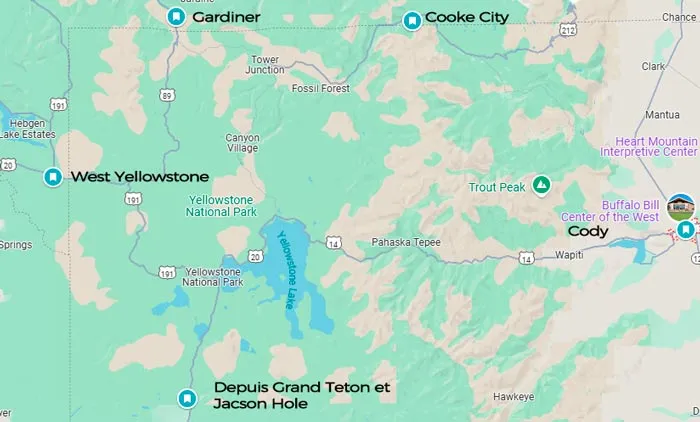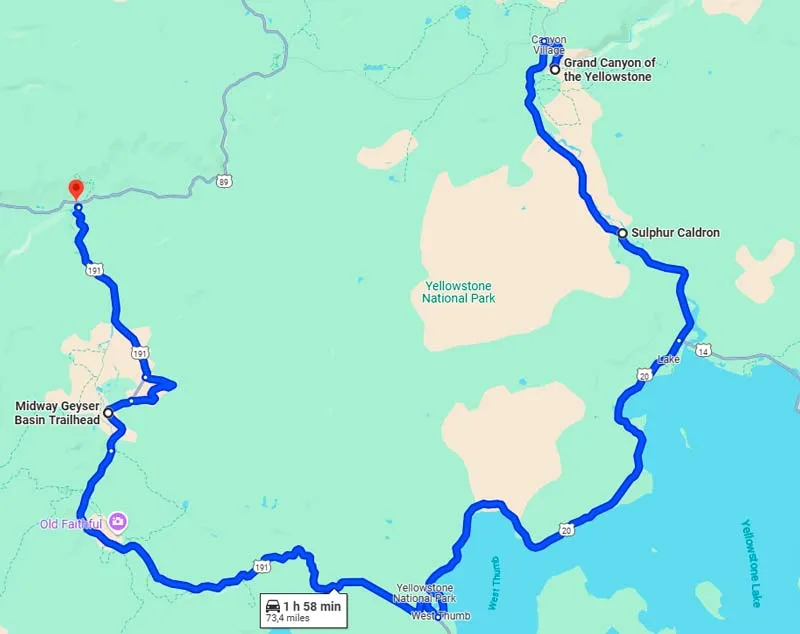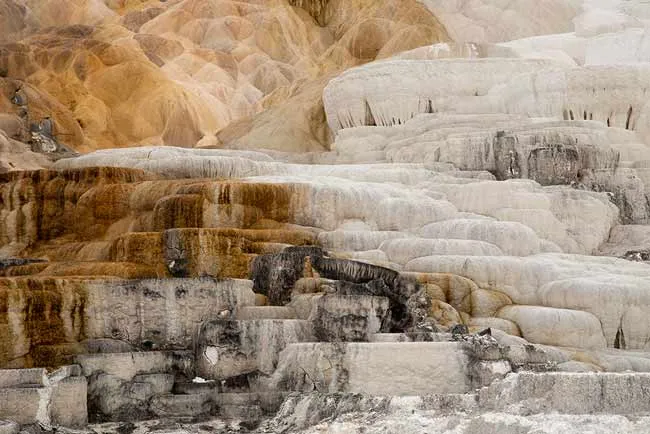Montana, nicknamed “Big Sky Country,” is renowned not only for its majestic mountains and the magnificent Glacier National Park. Eastern Montana’s grasslands, a hidden gem, offer unspoiled beauty and unique travel experiences that are distinctly different. If you’re seeking a journey to explore wild nature, delve into authentic Western culture, and enjoy tranquility, this Eastern Montana grasslands travel guide will be your ideal companion.
Eastern Montana’s grasslands stretch across gentle hills, vast river valleys, and unique geological wonders. This area is not only a paradise for nature lovers but also an attractive destination for those wanting to discover the history, culture, and distinctive cuisine of the American West. Join “Du lịch khắp thế gian” (Travel the Globe) to explore the exciting things awaiting you in Eastern Montana’s grasslands.
Discover the Untamed Beauty of Eastern Montana Grasslands
Makoshika State Park

Makoshika State Park, located near Glendive, is a must-visit destination when traveling to eastern Montana’s grasslands. Spanning over 11,000 acres, Makoshika (from the Lakota word meaning “bad land”) is famous for its spectacular Badlands geological formations, shaped by millions of years of erosion.
Activities and Experiences at Makoshika:
- Hiking: The park boasts numerous hiking trails with varying difficulty levels, suitable for all ages. The most popular trail is the Dinosaur Trail, where you can learn about the area’s rich fossil history.
- Scenic Driving: The Makoshika Park Road winds through the park, offering breathtaking views of the Badlands, especially at sunrise and sunset.
- Camping: The park has a campground with full amenities, allowing you to immerse yourself in nature and enjoy the peacefulness under the starry sky.
- Wildlife Viewing: Makoshika is home to various wildlife species such as deer, pronghorn, foxes, and diverse bird species. Bring binoculars for a chance to observe them in their natural habitat.
- Makoshika Visitors Center: Visit the visitor center to learn more about the park’s geology, history, and ecosystem. It also showcases dinosaur fossils found in the area.
Terry Badlands

Terry Badlands, near the town of Terry, is a more remote and lesser-known area than Makoshika, yet it possesses equally unique and impressive beauty. With canyons, hoodoos, and colorful clay formations, Terry Badlands is an ideal destination for those seeking to explore bizarre and wild landscapes.
Exploring Terry Badlands:
- Backcountry Driving: The Terry Badlands Backcountry Byway is a 27-mile (approximately 43 km) dirt road traversing the Badlands area. Prepare for rough roads with a high-clearance vehicle and check road conditions before heading out, especially after rain.
- Hiking and Scrambling: Although there are no official trails, you can freely explore Terry Badlands by hiking or scrambling. Be cautious of the rugged terrain and bring sufficient drinking water.
- Landscape Photography: Terry Badlands is a haven for landscape photographers. Sunrise and sunset light create stunning color effects on the clay formations, resulting in impressive photographs.
- Fossil Hunting: This area is also renowned for dinosaur fossils and other ancient creatures. Keep an eye on the ground as you explore, but remember that collecting fossils on public land is illegal.
Little Bighorn Battlefield National Monument

For those interested in American West history, the Little Bighorn Battlefield National Monument is a must-visit destination. Located near Crow Agency, this is the site of the famous Battle of the Little Bighorn in 1876, between the U.S. Army and the allied Native American tribes of Lakota, Northern Cheyenne, and Arapaho.
Discovering History at Little Bighorn Battlefield:
- Visit Custer National Cemetery: Custer Hill National Cemetery is the final resting place of U.S. soldiers killed in the battle, including Lieutenant Colonel George Armstrong Custer.
- Native American Memorial: The Native American Memorial honors the Native American warriors who fought and died in the battle.
- Visitor Center: The visitor center provides detailed information about the battle, history, and culture of the involved parties. You can view exhibits, documentaries, and participate in educational programs.
- Scenic Driving: The 4.5-mile (approximately 7 km) Battlefield Tour Road passes through the battlefield area, with stops to learn about different phases of the battle.
- Hiking: Several short hiking trails in the area allow you to explore the battlefield and admire the surrounding landscape.
Fort Union Trading Post National Historic Site

Fort Union Trading Post National Historic Site, near Sidney, is another significant historical landmark in eastern Montana’s grasslands. From 1828 to 1867, this fort was the largest fur trading post on the Missouri River, playing a vital role in the relationship between Native Americans and Europeans.
Exploring Fort Union Trading Post:
- Tour the Reconstructed Fort: Fort Union has been reconstructed to recreate life and trade activities here in the 19th century. You can tour the buildings, warehouses, and learn about the fort’s history.
- Visitor Center: The visitor center provides information about the fur trade history, the culture of Native American tribes involved in trading at the fort, and the fort’s role in shaping the American West.
- Hiking: The 1.5-mile (approximately 2.4 km) Fort Union Trail hikes along the Missouri River, offering beautiful natural scenery and wildlife viewing opportunities.
- Living History Events: At certain times of the year, the fort hosts living history events, reenacting trade activities, daily life, and significant events in the fort’s history.
Experience Local Culture and Cuisine
Authentic Western Towns
Eastern Montana’s grasslands are home to many small towns with a distinct Western flavor, where you can experience local culture, savor distinctive cuisine, and meet friendly locals.
Some Towns Worth Visiting:
- Miles City: This historic town is famous for the annual Bucking Horse Sale, a major event celebrating Western cowboy culture. Miles City also has the Range Riders Museum, showcasing ranching history and Western life.
- Glendive: The gateway to Makoshika State Park, Glendive is a peaceful small town with the Frontier Gateway Museum and Art Center, exhibiting local artwork and regional history.
- Sidney: Located near Fort Union Trading Post, Sidney is a small agricultural and commercial center, with several local restaurants and shops.
- Baker: The town of Baker is known for the “World’s Largest Steer” statue and the Fallon County Regional Museum, displaying local history and culture.
Western Cuisine
The cuisine of eastern Montana’s grasslands is deeply rooted in American West flavors, with dishes primarily featuring beef, venison, and local agricultural products.
Must-Try Dishes:
- Montana Beef: Montana is famous for its high-quality beef. Enjoy steak, ribs, or burgers at local restaurants.
- Venison: Venison is another Montana specialty. You can try roasted venison, venison stew, or venison sausage.
- Sourdough Bread: Sourdough bread is a popular staple in the West. Try it with soup, salad, or simply with butter.
- Montana Craft Beer: Montana has numerous craft breweries producing high-quality beer. Sample local brews at bars or restaurants.
- Huckleberry Pie: Huckleberries are a wild berry common in Montana. Enjoy delicious Huckleberry Pie, especially during summer.
Tips for Traveling to Eastern Montana Grasslands
Best Time to Visit
The best time to travel to eastern Montana’s grasslands is during summer (June to August) and early fall (September and October). Summer weather is warm and dry, ideal for outdoor activities like hiking, camping, and scenic driving. Fall brings vibrant foliage colors and cool, pleasant weather.
Spring (April and May) can be rainy and muddy, but it’s a great time to see wildflowers in bloom. Winter (November to March) is cold and snowy, but offers peaceful beauty and opportunities for winter activities like cross-country skiing and snowshoeing.
Transportation
The most convenient way to explore eastern Montana’s grasslands is by car. You can rent cars at major airports like Billings Logan International Airport (BIL) or Glasgow International Airport (GGW).
Driving Tips:
- Distances: Eastern Montana’s grasslands are vast, and destinations can be far apart. Plan your itinerary and calculate travel times accordingly.
- Dirt Roads: Some roads leading to attractions, especially in Terry Badlands, are dirt roads. Check road conditions and prepare with a suitable vehicle.
- Fuel: Gas stations may be sparse in remote areas. Fill up your tank before heading into remote areas.
- Wildlife: Be cautious of wildlife on the roads, especially at dawn and dusk.
Accommodation
Eastern Montana’s grasslands offer various accommodation options, from hotels and motels in small towns to campgrounds in state and national parks.
Accommodation Options:
- Hotels and Motels: Towns like Miles City, Glendive, and Sidney have several hotels and motels at reasonable prices.
- Bed & Breakfasts (B&Bs): Bed and Breakfasts (B&Bs) are a cozy and friendly option, allowing you to experience local hospitality.
- Campgrounds: Makoshika State Park and other public lands have campgrounds with full amenities, offering a close-to-nature experience.
- Vacation Rentals: If you’re traveling in a group or family, renting a vacation home or cabin can be a comfortable and convenient option.
Packing Essentials
When traveling to eastern Montana’s grasslands, pack appropriately for outdoor activities and weather conditions.
Essential Items:
- Clothing: Comfortable clothing suitable for the weather. Pack warm layers, windproof jackets, and rain gear, especially if traveling in spring or fall.
- Footwear: Comfortable and sturdy hiking shoes are essential if you plan to hike or scramble.
- Sunscreen, Hat, and Sunglasses: The sun in the grasslands can be intense, especially in summer.
- Insect Repellent: Insects can be bothersome, especially in summer.
- Map and GPS: Cell phone service may be unreliable in some areas. Bring a paper map and backup GPS device.
- Binoculars: Binoculars will enhance wildlife viewing and landscape appreciation.
- Camera: Don’t forget your camera to capture memorable moments on your journey.
- Water and Snacks: Carry sufficient water and snacks, especially when exploring remote areas.
Conclusion
Eastern Montana’s grasslands are a unique and captivating travel destination, offering distinct experiences compared to Montana’s other famous tourist areas. From the unspoiled beauty of the Badlands to significant historical sites and authentic Western culture, this place is sure to delight travelers who love exploration and adventure. Plan your trip and discover the amazing things awaiting you in eastern Montana’s grasslands!